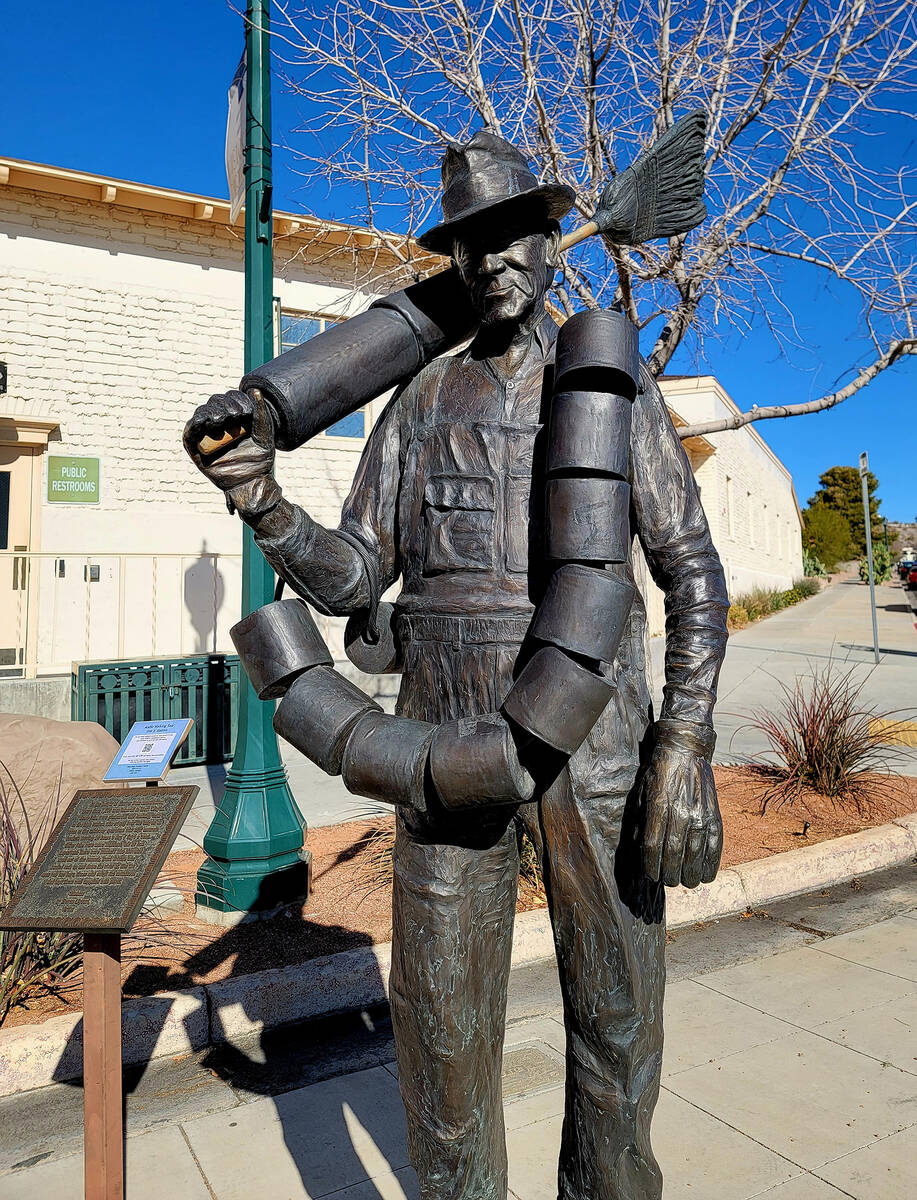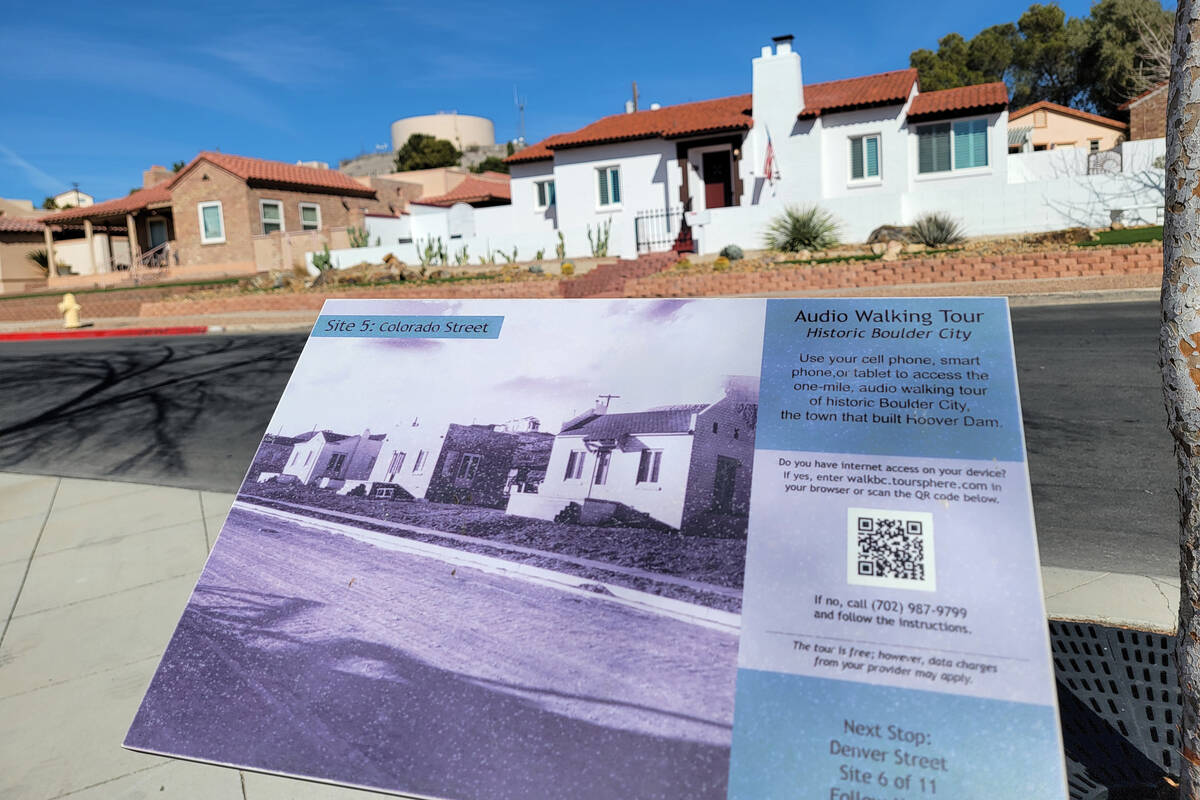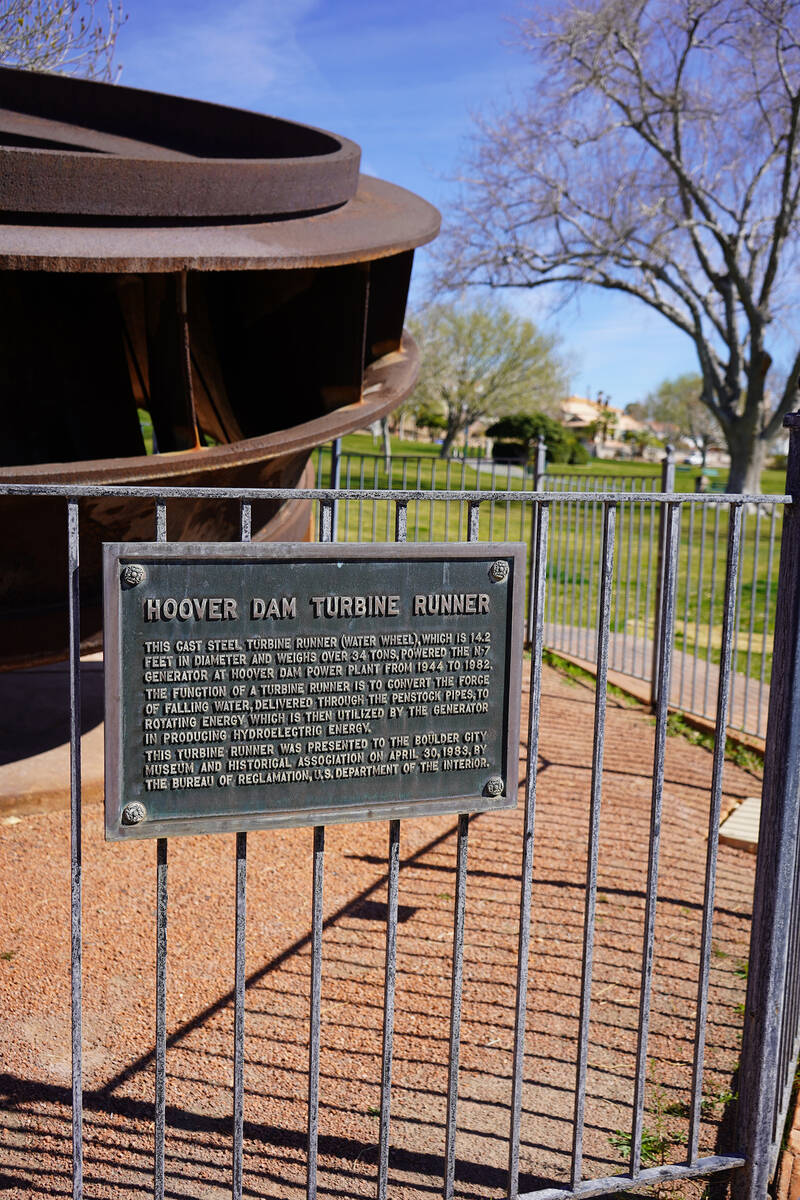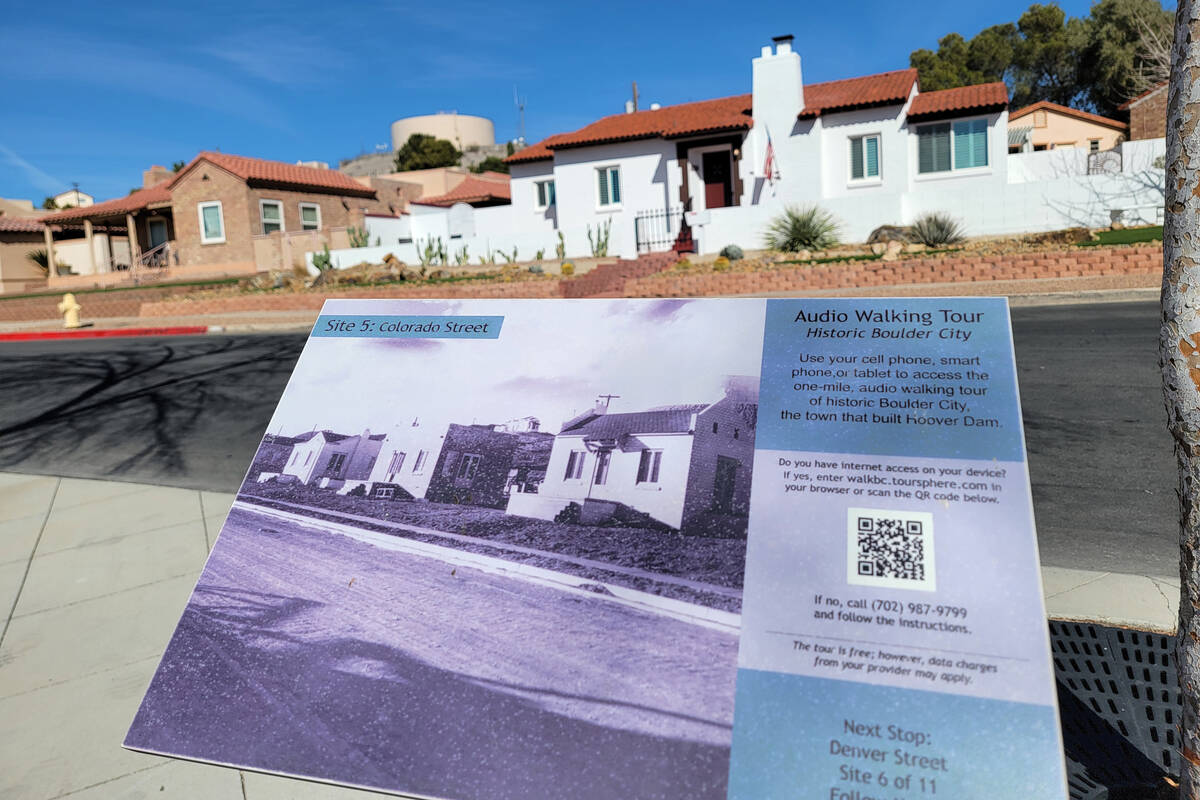‘Power’ walking on a tour of Hoover Dam history
Walkers can step back into Hoover Dam history while getting some of their daily steps in Boulder City.
The town, about a half-hour south of Las Vegas, helped build Hoover Dam. A self-guided walking tour explores the project’s 1930s river-taming and engineering milestones with 10 stops along a mile loop through Boulder City’s historic district. The tour shares details of a major story of American ingenuity during the Great Depression.
Although a mile of walking might only count for one-third of a daily 6,000-step goal, walkers can find many other Boulder City-area paths that could supplement the history walk’s exercise value.
Starting and ending at Boulder Dam Hotel, 1305 Arizona St., the walking tour includes a phone-based audio component and informational panels in neighborhoods, parks and along Nevada Way in downtown. Sculptures honor the work of men who played starring and behind-the-scenes roles in constructing what at 60 stories was the tallest dam in the world when it became fully operational in 1936.
Green path-finding markers embedded in the sidewalk have a worn-down appearance after nine years of the walking tour’s existence, but the general route is easy enough to follow because of the markers and a map that’s accessible on phones without having to download an app. The tour was created and curated by the Boulder City Museum and Historical Association.
Starting point
The Walk BC tour starts at Boulder Dam Hotel, a Dutch colonial 21-room hotel built in 1933 with the rare luxuries of private bathrooms and air conditioning. Construction company executives, dignitaries and VIPs were guests in the hotel’s early years and included Bette Davis, Shirley Temple, Will Rogers, Howard Hughes and Henry Fonda. The hotel continues to host overnight guests and houses the Boulder City/Hoover Dam Museum as well as art galleries.
Up next on the walking tour is the Los Angeles Water and Power Building on Nevada Way, where managers in the art deco-influenced offices represented Hoover Dam’s largest hydroelectric power customer and were responsible for installation and operation of the dam’s generators. Just outside the building, walkers find a statue of Alabam, the toilet paper man who became a symbol of workers who traveled for hard-to-find jobs during the Great Depression. Over the five-year construction period, 21,000 workers were employed to help build the dam.
An epic undertaking
One highpoint of the audio tour is its accompanying collection of historical photos that show up on phones as walkers follow the path. Included is one of Alabam, whose real name is unknown. His job was to help keep the construction site’s outhouses clean and to make sure there was enough available toilet paper.
He represents the migrant workers whose desperation for wages during the Great Depression helped make possible the epic feat of constructing Hoover Dam. The nearly 90-year-old dam continues to provide power and to hold back Colorado River water in what’s still America’s largest reservoir, Lake Mead.
“Puddlers’ Break” is another statue walkers will find when continuing north along Nevada Way to Arizona Street. The statue commemorates the men whose hard work helped build the massive dam in dangerous conditions in a remote canyon where temperatures could reach 120 degrees.
The accompanying audio explains puddlers would push around wet concrete with their feet, and muckers were responsible for removing debris from the riverbed and for shoveling mud out of tunnels. High scalers cleared away loose rock on 700-foot Black Canyon walls to make conditions safer for workers below. They also made sure buckets of concrete made it up to high points as dam construction continued.
Home to history
Colorado Street’s intersection with Nevada Way is the next tour stop, where the narrative focuses on Boulder City, the first master-planned community in Southern Nevada. Homes built by the Bureau of Reclamation for engineers and managers on the original 1931 townsite are now occupied by private residents.
Bigger homes are a short distance away on Denver Street and were occupied during dam construction by executives and high-level engineers. During that time in Boulder City history, the townsite was intended to be a federal reservation open only to those working to support the dam’s construction.
Near the homes is the stately Bureau of Reclamation’s Lower Colorado River Basin regional headquarters, a Spanish-style building completed in 1932 to manage the rise of Hoover Dam in Black Canyon. Nowadays, walkers can get a view of Lake Mead in the rear of the building and wander along paths through a xeric garden that recently replaced a greenscape that a Bureau of Reclamation sign says saves two million gallons of Colorado River water annually.
Tour’s end, more options
The walking tour next leads to the sprawling lawn and mature trees of nearby Wilbur Square, where a colossal turbine runner is on display. This 34-ton steel wheel helped to power a Hoover Dam generator from 1944 to 1982.
An accompanying sign explains, “The function of a turbine runner is to convert the force of falling water, delivered through the penstock pipes, to rotating energy which is then utilized by the generator in producing hydroelectric energy.”
City Hall is the last stop before the loop is completed at Boulder Dam Hotel. Walkers learn that City Hall was originally Boulder City’s first school because many dam workers during the Great Depression ended up bringing their families with them.
At Boulder Dam Hotel, walkers are invited inside to study the photography of Ben Glaha, who documented the construction of Hoover Dam and captured its impressive design elements against stark surroundings.
After completing the Walk BC tour, walkers have more options, including an unscripted stroll around charming Boulder City or a trek along sidewalks that eventually connect with the River Mountains Loop Trail and could then lead to a Hemenway Park visit for potential bighorn sheep sightings (4-mile round trip from downtown Boulder City).
Other choices would be driving to hike the Historic Railroad Tunnel trail within Lake Mead National Recreation Area or finding the parking lot off U.S. Highway 93 that allows pedestrians access to walk across the Mike O’Callaghan-Pat Tillman Memorial Bridge to get unparalleled views of Hoover Dam.





























